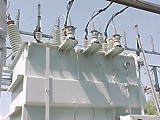 |
 |
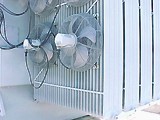 |
||
A transformer is a pair of coils on an iron core used to change the voltage of an alternating current. The transformers are often called a "dumb little animal" by electricians because they just sit there.
A working transformer has an iron circuit to channel the field from one coil to another coil. There is a simple relationship between the voltages across the two coils: they are proportional to the number of turns.
SUBSTATION TRANSFORMERS
A regular transformer at the electrical substation has 69,000 volts coming in, and 12,000 volts going out every day.
 |
 |
 |
||
OIL INSIDE TRANSFORMERS
All transformers have oil inside. there is a lot more oil inside the bigger transformers. The transformers at the sub station had fans on them. The fans are are used to cool the oil down. There is an air gap on the top of the transformers that allows the heated oil to rise on hot days. On cold days the oil level goes down. Then the gap of air space at the top of the transformer is filled with nitrogen.
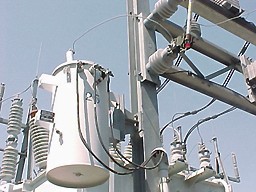 |
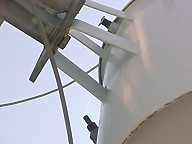 |
|
KINDS OF TRANSFORMERS
Transformers are found in all shapes and sizes throughout the grid. Some transformers are at the power station, electrical substation (above), on electrical poles, and on people's lawns.
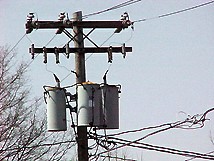 |
||
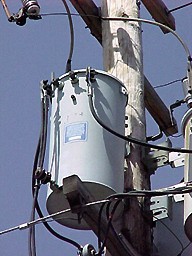 |
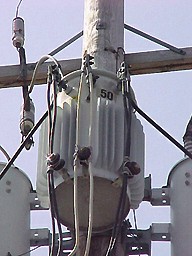 |
|